Bestway 53054 Handleiding
Bestway
Opbouwzwembad
53054
Bekijk gratis de handleiding van Bestway 53054 (32 pagina’s), behorend tot de categorie Opbouwzwembad. Deze gids werd als nuttig beoordeeld door 45 mensen en kreeg gemiddeld 4.9 sterren uit 23 reviews. Heb je een vraag over Bestway 53054 of wil je andere gebruikers van dit product iets vragen? Stel een vraag
Pagina 1/32

S-S-004299
WARNING
- The safety of your children depends only on you! Children under 5 years old
at greatest risk. The accident does not happen only to other people! Be
ready to face it!
- Supervise and take action:
• Always supervise children from nearby;
• Assign at least one person in charge of the safety;
• Increase supervision if there are several people in the swimming pool;
• Wet your neck, arms and legs before entering the pool;
• Learn the necessary rescue operations, especially those relating to rescuing
children;
• Prohibit diving and jumping;
• Prohibit running and playing games on the edge of the swimming pool;
• Do not leave toys near or in an unsupervised swimming pool;
• Always keep the pool water clean;
• Keep the products needed for water treatment outside the reach of children;
- Place an accessible telephone near the pool so that the children will never
be out of supervision when you are on the phone. In any case this doesn’t
replace a close supervision;
- In case of accident:
• Take all the children out of the water immediately.
• Call for emergency support and follow their instruction/advice.
• Replace wet clothing with dry clothing.
- Remember and hang the rescue numbers near the pool:
• Firemen (18 for France);
• First Aid/ Emergency Unit: (15 for France);
• Poison Treatment Centre;
PLEASE READ CAREFULLY AND SAVE THESE INSTRUCTIONS FOR
FUTURE REFERENCE
• Children, especially children younger than 5 years, are at high risk of
drowning.
• Drowning occurs silently and quickly and can occur in as little as 2 in.
(5cm) of water.
• Keep children in your direct sight, stay close, and actively supervise them
when they are in or near this pool and when you are filling and emptying this
pool.
• When searching for a missing child, check the pool first, even if child is
thought to be in the house.
• Empty pool completely after each use and store the empty pool in such a
way that it does not collect water from rain or any other source.
Drowning Risk:
• Keep unsupervised children from accessing the pool by installing fencing
or other approved barrier around all sides of the pool. State or local laws
or codes may require fencing or other approved barriers. Check state or
local laws and codes before setting up the pool. Refer to the list of barrier
recommendations and guidelines as described in CPSC Publication No.362.
• Do not leave toys inside pool when finished using, since toys and similar
items might attract a child to the pool.
• Position furniture (for example, tables, chairs) away from pool and so that
children cannot climb on it to gain access to the pool.
• After using the pool, remove water to a level of 1/2 in. (1cm) or less.
Diving Risk:
• Do not dive into the pool. Diving into shallow water can result in a broken
neck, paralysis, or death.
Electrocution Risk:
• Keep all electrical lines, radios, speakers and other electrical appliances
away from the pool.
• Do not place pool near or under overhead electrical lines.
First Aid:
• Keep a working phone and a list of emergency numbers near the pool.
• Become certified in cardiopulmonary resuscitation (CPR). In the event of
an emergency, immediate use of CPR can make a life-saving difference.
Safety Barrier Guidelines for Residential Swimming Pool
Section I: Outdoor swimming pool
An outdoor swimming pool, including an inground, aboveground, or onground
pool, hot tub, or spa, should be provided with a barrier which complies with
the following:
1. The top of the barrier should be at least 48 inches above grade measured
on the side of the barrier which faces away from the swimming pool. The
maximum vertical clearance between grade and the bottom of the barrier
should be 4 inches measured on the side of the barrier which faces away
from the swimming pool. Where the top of the pool structure is above
grade, such as an aboveground pool, the barrier may be at ground level,
such as the pool structure, or mounted on top of the pool structure. Where
the barrier is mounted on top of the pool structure, the maximum vertical
clearance between the top of the pool structure and the bottom of the
barrier should be 4 inches.
2. Openings in the barrier should not allow passage of a 4-inch diameter
sphere.
3. Solid barriers, which do not have openings, such as a masonry or stone
wall, should not contain indentations or protrusions except for normal
construction tolerances and tooled masonry joints.
4. Where the barrier is composed of horizontal and vertical members and the
distance between the tops of the horizontal members is less than 45
inches, the horizontal members should be located on the swimming pool
side of the fence. Spacing between vertical members should not exceed
1-3/4 inches in width. Where there are decorative cutouts, spacing within
the cutouts should not exceed 1-3/4 inches in width.
5. Where the barrier is composed of horizontal and vertical members and
the distance between the tops of the horizontal members is 45 inches
or more, spacing between vertical members should not exceed 4
inches. Where there are decorative cutouts, spacing within the cutouts
should not exceed 1-3/4 inches in width.
• Only for domestic use.
• Only for outdoor use.
• Children can drown in very small amounts of water. Empty the pool when not
in use.
• Do not install the paddling pool over contrete, asphalt or any other hard
surface.
• Place the product on a level surface at least 2 m from any structure or
obstruction such as a fence, garage, house, overhanging branches,
laundry lines or electrical wires.
• Recommend back towards the sun when playing.
• Modification by the consumer of the original paddling pool (for example the
addition of accessories) shall be carried out according to the instructions of
the manufacturer.
• Keep assembly and installation instruction for future reference.
• For 53033, 53051, 53052, 53054, 91014, 53055, 53057, 53060, 53063,
91201, make sure the pool and slide are always connected while in use; do
not exceed the maximum weight: 45kg / 99lbs.
Additional Warning Only for US/CA
Read and Follow All Safety Information and
Instructions.
Keep for future reference.
Failure to follow these warnings and instructions
can result in serious injury or death to users,
especially children.
General Warning
Never leave your child unattended – drowning hazard.
1
Prevent Drowning
Closely watch children who are this pool.in or near
Children under 5 are at highest risk for drowning.
Empty pool after use.
WARNING

6. Maximum mesh size for chain link fences should not exceed 1-3/4 inch
square unless the fence is provided with slats fastened at the top or the
bottom which reduce the openings to no more than 1-3/4 inches.
7. Where the barrier is composed of diagonal members, such as a lattice
fence, the maximum opening formed by the diagonal members should be
no more than 1-3/4 inches.
8. Access gates to the pool should comply with Section I, Paragraphs 1
through 7,and should be equipped to accommodate alocking device.
Pedestrian access gates should open outward, away from the pool, and
should be self-closing and have a self-latching device. Gates other than
pedestrian access gates should have a self-latching device. Where the
release mechanism of the self-latching device is located less than 54
inches from the bottom of the gate, (a) the release mechanism should be
located on the pool side of the gate at least 3 inches below the top of the
gate and (b) the gate and barrier should have no opening greater than 1/2
inch within18 inches of the release mechanism.
9. Where a wall of a dwelling serves aspart of the barrier, one of the
following should apply:
(a) All doors with direct access to the pool through that wall should be
equipped with an alarm which produces an audible warning when the
door and its screen, if present, are opened. The alarm should sound
continuously for a minimum of 30 seconds within 7 seconds after the
door is opened. Alarms should meet the requirements of UL2017
General-Purpose Signaling Devices and Systems, Section 77. The
alarm should have a minimum sound pressure rating of 85 dBA at 10
feet and the sound of the alarm should be distinctive from other
household sounds, such as smoke alarms, telephones, and door bells.
The alarm should automatically reset under all conditions. The alarm
should be equipped with manual means, such as touchpads or
switches, to temporarily deactivate the alarm for a single opening of the
door from either direction. Such deactivation should last for nomore
than 15 seconds. The deactivation touchpads or switches should be
located at least 54 inches above the threshold of the door.
(b) The pool should be equipped with a power safety cover which
complies with ASTM F1346-91 listed below.
(c) Other means of protection, such as self-closing doors with self-latching
devices, are acceptable so long as the degree of protection afforded is
not less than the protection afforded by (a) or (b) described above.
10. Where an aboveground pool structure is used as a barrier or where the
barrier is mounted on top of the pool structure, and the means of access is
a ladder or steps, then (a) the ladder to the pool or steps should be
capable of being secured, locked or removed to prevent access, or (b) the
ladder or steps should be surrounded by a barrier which meets Section I,
Paragraphs 1 through 9. When the ladder or steps are secured, locked, or
removed,any opening created should not allow the passage of a 4-inch
diameter sphere.
Section II: Barrier Locations
Barriers should be located so as to prohibit permanent structures, equipment
or similar objects from being used to climb the barriers.
Preparation
Installation of small swimming pool usually takes only 10 minutes with 1
people
Recommendations regarding placement of the pool:
• It is essential the pool is set up on solid, level ground. If the pool is set up on
uneven ground it can cause collapse of the pool and flooding, causing
serious personal injury and/or damage to personal property. Setting up on
uneven ground will void the warranty and service claims.
• Do not set up on driveways, decks, platforms, gravel or asphalt. Ground
should be firm enough to withstand the pressure of the water; mud, sand,
soft / loose soil or tar are not suitable.
• The ground must be cleared of all objects and debris including stones and
twigs.
• Check with your local city council for by-laws relating to fencing, barriers,
lighting and safety requirements and ensure you comply with all laws.
Assembly
Warning: Adult assembly required.
1. Take the pool and accessories out of the carton with care and spread out
the pool on to the selected site.
2. Open the safety valves and inflate the parts one by one. Be sure to close
the valves after inflation. Air pump is not included.
NOTE: Do not over inflate. Do not use either an air compressor or
compressed air.
3. Tie the slide to the pool with the provided ropes to the relevant grommets.
(For 53033, 53051, 53052, 53054, 91014, 53055, 53057, 53060, 53063,
91201, only)
4. Connect the Hose Adapter to the Hose Connector on the product.
(See Fig. 1)
5. Connect your garden hose to the Hose Adapter.
The Hose Adapter can be used with two different garden hoses, see Note:
Fig. 2 & Fig 3 for assembly.
ATTENTION
- La sécurité de vos enfants ne dépend que de vous ! Le risque est maximum
lorsque les enfants ont moins de 5 ans. L'accident n'arrive pas qu'aux
autres! Soyez prêt à y faire face!
- Surveillez et agissez:
• La surveillance des enfants doit être rapprochée et constante.
• Désignez un seul responsable de la sécurité.
• Renforcez la surveillance lorsqu'il y a plusieurs utilisateurs dans la
pataugette.
• Mouillez nuque, bras et jambes avant d'entrer dans l'eau.
• Apprenez les gestes qui sauvent et surtout ceux spécifiques aux enfants.
• Interdisez le plongeon ou les sauts.
• Interdisez la course et les jeux vifs aux abords de la pataugette.
• Ne Laissez pas de jouets à proximité et dans la pataugette qui n'est pas
surveillée.
• Maintenez en permanence une eau limpide et saine.
• Stockez les produits de traitement d'eau hors de la portée des enfants.
- Prévoyez un téléphone accessible près du bassin pour ne pas laisser vos
enfants sans surveillance quand vous téléphonez. Mais il ne remplacent en
aucun cas une surveillance rapprochée
NOTE: All drawings for illustration purpose only. May not reflect actual
product. Not to scale.
Empty the pool
1. Check local regulations for specific directions regarding disposal of
swimming pool water.
2. Deflate all the air chambers, at the same time push down the wall of the
pool to release the water. Make sure release all the water in 20 minutes.
Drain by adult only!NOTE:
Pool Maintenance
Warning: If you do not adhere to the maintenance guidelines covered herein,
your health might be at risk, especially that of your children.
• Change the water of pools frequently (particularly in hot weather) or when
noticeably contaminated, unclean water is harmful to the user’s health.
• Please contact your local retailer to obtain chemicals to treat the water in
your pool. Be sure to follow the chemical manufacturer’s instructions.
• Proper maintenance can maximize the life of your pool.
• See packaging for water capacity.
Cleaning and Storage
1. After use, use a damp cloth to gently clean all surfaces.
Never use solvents or other chemicals that may damage the product.Note:
2. Air dry the pool, once pool is completely dry, fold pool carefully and put
back to its original packing. If pool is not completely dry, mould may result
and will damage the pool.
3. Store in a cool, dry place and out of children’s reach.
4. Check the product for damage at the beginning of each season and at
regular intervals when in use.
Repair
If a chamber is damaged, use the provided repair patch.
1. Clean area to be repaired.
2. Carefully peel patch.
3. Press patch over area to be repaired.
4. Wait 30 minutes before inflation.
NOTE: All drawings for illustration purpose only. May not reflect actual
product. Not to scale.
6. Slowly fill with water to pool just below the fill line on the pool’s interior. Do
not exceed the fill line on the pool's interior. as this DO NOT OVERFILL
could cause the pool to collapse.
ATTENTION: Do not leave pool unattended while filling with water.
Fig. 1
Hose AdapterHose A
Fig. 2
Hose AdapterHose B
Fig. 3
2
Proper Water Level Proper Water Level Proper Water Level
S-S-004299

- En cas d'accident:
• Sortez l’enfant de l'eau le plus rapidement possible
• Appelez immédiatement du secours et suivez les conseils qui vous seront
donnés
• Remplacez les habits mouillés par des couvertures chaudes
- Mémorisez et affichez près de la piscine les numéros de premiers
secours:
• Pompiers (18 pour la France)
• SAMU (15 pour la France)(
• Centre antipoison
A LIRE ATTENTIVEMENT ET À CONSERVER POUR CONSULTATION
ULTÉRIEURE
• Les enfants, en particulier les enfants de moins de 5 ans, sont à risque de
noyade.
• Les noyades se produisent en silence et peuvent rapidement se produire
même dans 5cm (2 pouces) d’eau.
• Vous devez toujours avoir directement sous les yeux les enfants, restez à
proximité et surveillez-les quand ils sont dans la piscine ou à côté ainsi que
quand vous remplissez ou videz la piscine.
• Si vous cherchez un enfant, contrôlez d’abord la piscine même si vous
pensez que l’enfant se trouve dans la maison.
• Videz complètement la piscine après chaque utilisation et rangez-la de
manière à ce qu’elle ne recueille pas l’eau de pluie ou provenant de toute
autre source.
Risques de noyade:
• Empêchez aux enfants non surveillés d’accéder à la piscine en installant
une clôture ou une autre barrière agréée tout autour de la piscine. Les lois
ou réglementations locales ou nationales pourraient prévoir l’usage de
clôtures ou de barrières agréées. Contrôlez les lois ou réglementations
locales ou nationales avant de monter la piscine. Faites référence à la liste
des recommandations et des instructions sur les barrières, indiquée dans la
Publication CPSC n° 362.
• Ne laissez pas de jouets dans la piscine quand vous la quittez car ces jouets
pourraient attirer les enfants vers la piscine.
• Placez les meubles (par exemple, tables, chaises) loin de la piscine pour
que les enfants ne puissent pas y grimper pour accéder à la piscine.
• Après l’utilisation de la piscine, enlevez l’eau jusqu’à un niveau de 1cm (1/2
pouce) ou moins.
Plongée à risque:
• Ne plongez pas dans la piscine. Le fait de plonger dans une eau peu
profonde peut causer des fractures du cou, des paralysies ou même la mort.
Risque d’électrocution:
• Placez les lignes électriques, les radios, les haut-parleurs et tout autre
appareil électrique loin de la piscine.
• Ne placez pas la piscine à proximité ou sous des lignes électriques
aériennes.
Premiers secours:
• Conservez un téléphone fonctionnant et une liste de numéros d'urgence
près de la piscine.
• Apprenez la réanimation cardio-respiratoire (CPR). En cas d’urgence,
l’usage immédiat de la réanimation cardio-respiratoire peut sauver une vie.
Barrières de sécurité pour les piscines résidentielles
Section I: Piscine à l’extérieur
Une piscine à l’extérieur, y compris une piscine creusée, hors sol ou
semi-creusée, un bain chaud ou un spa, doivent être équipés d’une barrière
conforme aux points suivants :
1. Le sommet de la barrière doit être à au moins 48 pouces (1,20m environ)
du niveau du sol, la mesure étant effectuée sur le côté de la barrière
tourné vers l’extérieur. La distance verticale maximale entre le niveau du
sol et le bas de la barrière doit être de 4 pouces (10cm), la mesure étant
effectuée sur le côté de la barrière tourné vers l’extérieur. Quand le
sommet de la structure de la piscine est au-dessus du niveau du sol,
comme pour une piscine hors sol, la barrière doit être au niveau du sol,
comme la structure de la piscine, ou bien montée au sommet de la
structure. Quand la barrière est montée au sommet de la structure de la
piscine, la distance verticale maximale entre le sommet de la structure et
le bas de la barrière doit être de 4 pouces (10cm).
2. Les ouvertures dans la barrière doivent empêcher le passage d’une
sphère de 10cm (4 pouces) de diamètre.
3. Les barrières pleines, sans ouvertures, comme une paroi en pierre ou en
maçonnerie, ne doivent pas présenter d’indentations ou de saillies, sauf
dans les tolérances normales de construction et pour les joints de
maçonnerie.
4. Quand la barrière est composée d'éléments horizontaux et verticaux, et la
distance entre le sommet des éléments horizontaux est inférieure à 45
pouces (114cm), les éléments horizontaux doivent être placés sur la
clôture du côté de la piscine. L’espace entre les éléments verticaux ne doit
pas dépasser 1-3/4 pouces (4cm) de largeur. En cas de présence de
silhouettes de décoration, l’espace entre les silhouettes ne doit pas
dépasser 1-3/4 pouces (4cm) de largeur.
5. Quand la barrière est composée d'éléments horizontaux et verticaux, et la
distance entre le sommet des éléments horizontaux est de 45 pouces
(114cm) ou plus, l’espace entre les éléments verticaux ne doit pas
dépasser 4 pouces (10cm). En cas de présence de silhouettes de
décoration, l’espace entre les silhouettes ne doit pas dépasser 1-3/4
pouces (4cm) de largeur.
6. La dimension maximale des treillis pour les clôtures à mailles
losangées ne doit pas dépasser 1-3/4 pouces carrés (4cm), à moins
que la clôture ne soit équipée de traverses au sommet ou au bas qui
réduisent les ouvertures à moins de 1-3/4 pouces (4cm).
7. Quand la barrière est composée d’élément en diagonale, comme une
clôture en lattis, l’ouverture maximale formée par les éléments en
diagonale ne doit pas dépasser 1-3/4 pouces.
• Réservé à un usage familial.
• Utilisation à l’extérieur.
• Les enfants peuvent se noyer dans une très faible quantité d’eau. Vider la
pataugette lorsqu’elle n’est pas utilise.
• Ne pas installer la pataugette sur du béton, de l’asphalte ou tout autre
revêtement en dur.
• Placez le produit sur une surface plate à au moins 2m de toute structure ou
obstruction comme des clôtures, un garage, une maison, des branches
pendantes, des cordes à linge ou des fils électriques.
• Pendant le jeu, il est recommandé de tourner le dos au soleil.
• Toute modification du produit d'origine (par exemple l'ajout d'accessoire) doit
être effectuée conformément aux instructions fournies par le fabricant.
• Conserver les instructions de montage et d’installation pour de futures
références.
• Pour les modèles 53033, 53051, 53052, 53054, 91014, 53055, 53057,
53060, 53063, 91201, assurez-vous que la piscine et le toboggan soient
toujours raccordés quand ils sont utilisés ; ne dépassez pas le poids
maximal: 45 kg / 99 lbs.
Avertissements supplémentaires, uniquement pour USA/CA
Lire et suivre toutes les informations et instructions
de sécurité.
Conserver pour de futures références.
Le fait de ne pas suivre ces avertissements et ces
instructions peut provoquer de graves blessures
ou le décès d’utilisateurs, en particulier d’enfants.
Avertissement général
Ne jamais laisser votre enfant sans surveillance – Danger de noyade.
S-S-004299
3
Évitez les noyades
Surveillez attentivement les enfants qui sont près
de ou dans cette piscine! Les enfants de moins
de 5 ans risquent davantage de se noyer!
AVERTISSEMENT
Product specificaties
| Merk: | Bestway |
| Categorie: | Opbouwzwembad |
| Model: | 53054 |
| Kleur van het product: | Blue,Red |
| Breedte: | 3810 mm |
| Diepte: | 1750 mm |
| Hoogte: | 690 mm |
| Breedte verpakking: | 400 mm |
| Diepte verpakking: | 130 mm |
| Hoogte verpakking: | 393 mm |
| Type verpakking: | Doos |
| Materiaal: | Vinyl |
| Inhoud: | 276 l |
| Verpakkingsinhoud: | Surf rider |
| Kleuring: | Patroon |
| Producten per pallet: | 48 stuk(s) |
| Verpakkingsvolume: | 49000 cm³ |
| Intrastatcode: | 95069990 |
| Minimum bestelhoeveelheid: | 2 stuk(s) |
| Inclusief reparatiemiddel: | Ja |
| Afmetingen leeggelopen (B x L): | 3000 x 1740 mm |
| Zelfvergrendelende veiligheidsklep: | Ja |
| Waterspuit: | Ja |
| Afneembare glijbaan: | Ja |
Heb je hulp nodig?
Als je hulp nodig hebt met Bestway 53054 stel dan hieronder een vraag en andere gebruikers zullen je antwoorden
Handleiding Opbouwzwembad Bestway
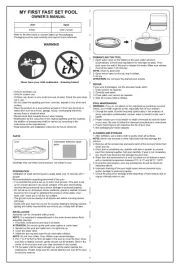
21 Mei 2025

2 April 2025

2 April 2025
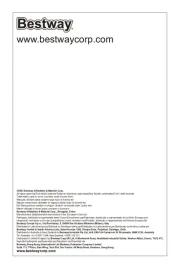
2 April 2025
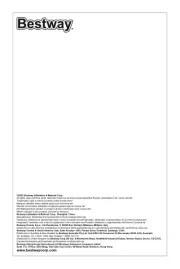
2 April 2025
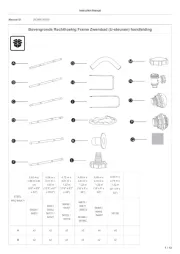
2 April 2025
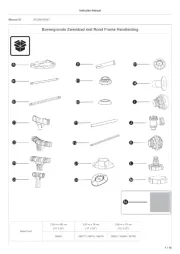
2 April 2025

28 Maart 2025

28 Maart 2025

20 November 2024
Handleiding Opbouwzwembad
Nieuwste handleidingen voor Opbouwzwembad
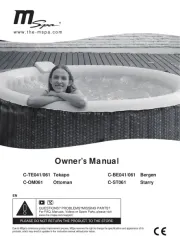
17 Juni 2025

2 April 2025
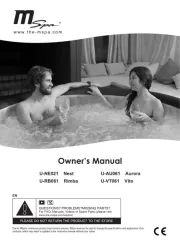
1 April 2025
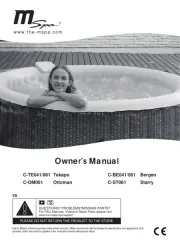
1 April 2025
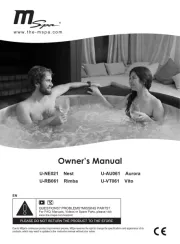
1 April 2025
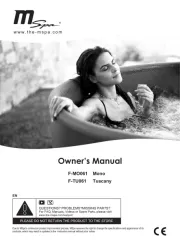
1 April 2025
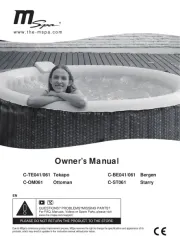
1 April 2025
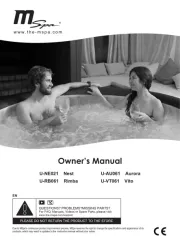
29 Maart 2025
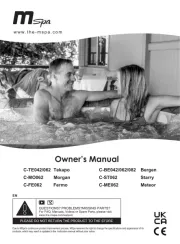
29 Maart 2025

18 November 2024